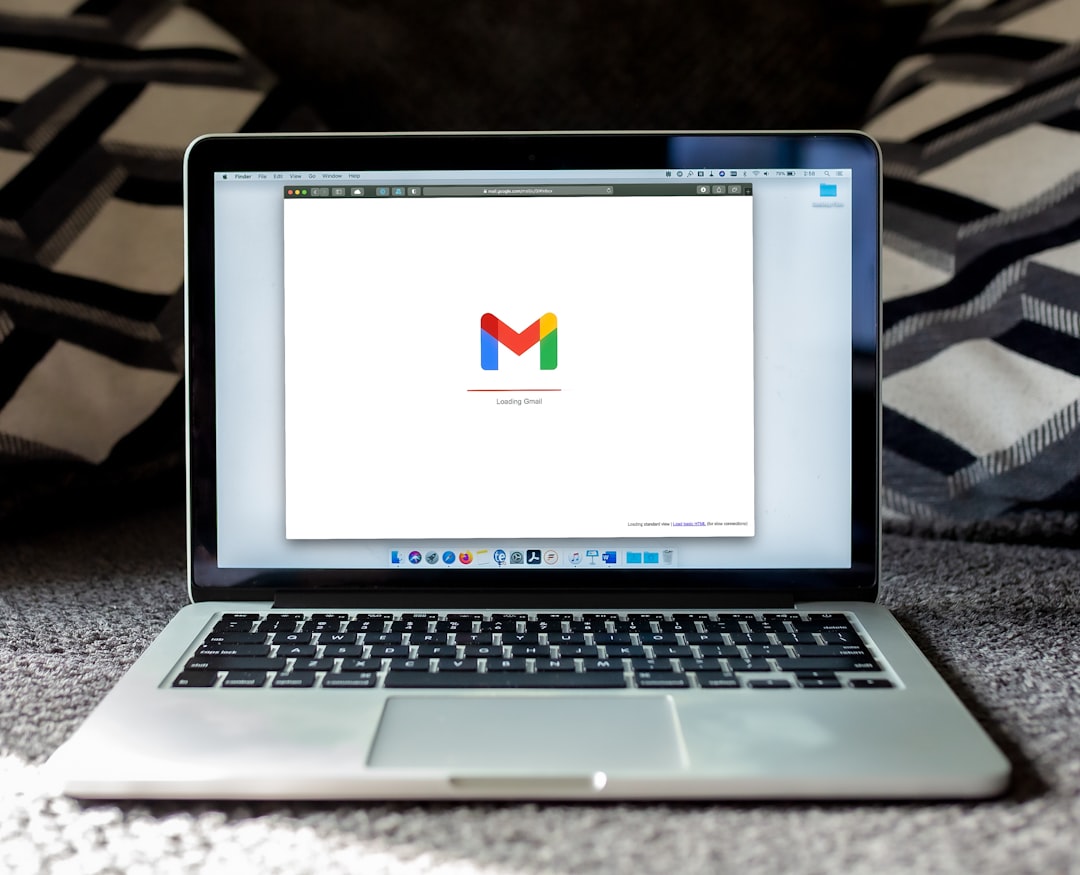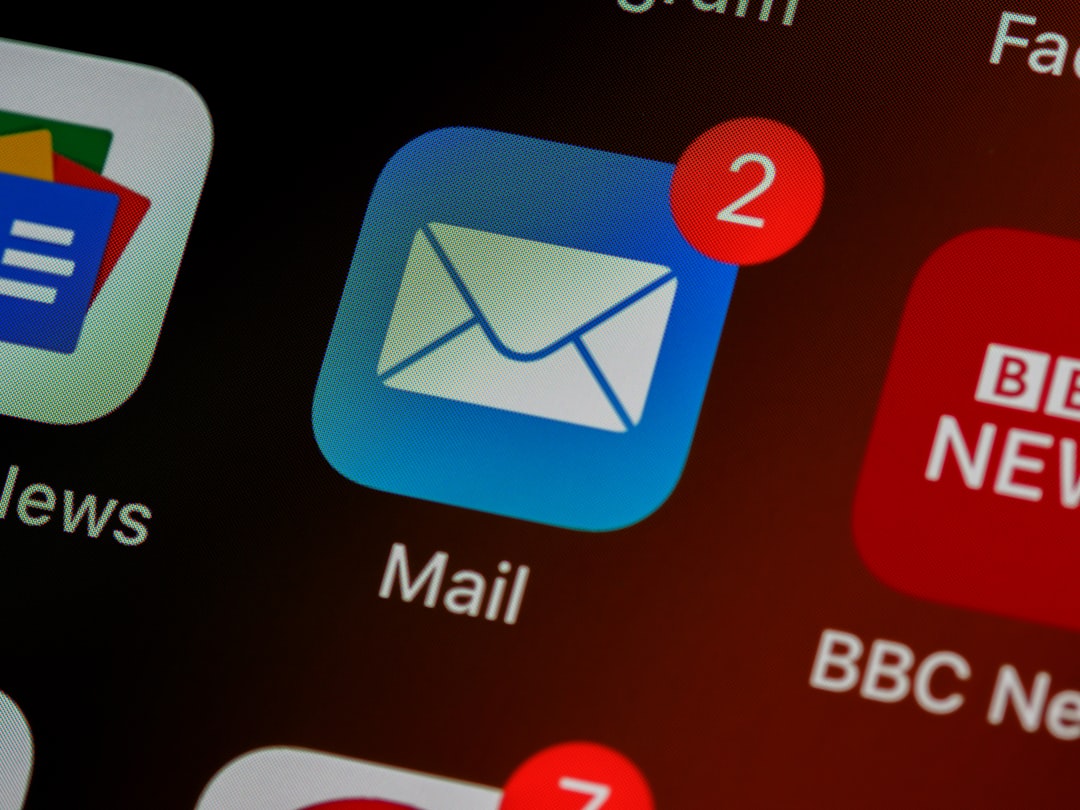B2B Email Marketing Benchmarks 2024 Key Metrics and Industry Averages Revealed
B2B Email Marketing Benchmarks 2024 Key Metrics and Industry Averages Revealed - Average open rate hits 18% for B2B emails in 2024
In 2024, the average B2B email open rate sits at 18%. This indicates ongoing difficulties in getting business professionals to actually open and read marketing emails. While not terrible, it's below the often-cited 'good' range of 20-30%, showing that many businesses haven't quite mastered the art of crafting compelling email subject lines and preheaders. It's worth noting that, while this open rate is lower than the average B2C open rate, which is reportedly higher, B2B emails demonstrate stronger click-through rates. This suggests that, if a recipient does open a B2B email, they might be more likely to click through to the intended content. However, the substantial bounce rate of 24.8% is a cause for concern, reminding us that email deliverability and list hygiene remain critical. Simply getting emails into inboxes isn't enough, the content and sender need to consistently prove they deserve a read.
The 18% average open rate for B2B emails in 2024, while modest, suggests a gradual climb in email effectiveness. It seems companies are refining their targeting and messaging, potentially leading to a slow but steady increase in reader engagement. It's worth noting that this 18% figure is a broad average, and variations exist across different sectors and strategies. Whether this rate is truly indicative of improved email efficacy or simply reflects a broader trend in digital communication requires further exploration.
Considering the overall industry average open rate sits around 41.3%, B2B emails appear to face a unique set of challenges in gaining attention. This discrepancy highlights the importance of understanding the nuances of B2B audience engagement compared to broader email usage. It is also important to keep in mind that benchmarks like a "good" 20-30% open rate are general guidelines and don't always apply to all scenarios. The ideal open rate depends significantly on the industry, the specific campaign goals, and the target audience.
A further complication in assessing the effectiveness of B2B email open rates is the interplay of metrics such as bounce rates and spam complaints. Analyzing open rate in isolation can be misleading; a deeper dive into other metrics, particularly bounce and spam rates, is crucial for obtaining a holistic understanding of email deliverability and performance. Simply achieving a decent open rate doesn't necessarily translate to success if a significant portion of emails aren't even being delivered or are ending up in spam folders. This interconnectedness of email performance metrics warrants further research.
B2B Email Marketing Benchmarks 2024 Key Metrics and Industry Averages Revealed - Click-through rates reach 4% across B2B campaigns
Across B2B email marketing campaigns in 2024, click-through rates have reached 4%. This indicates that while getting B2B professionals to open emails remains a hurdle, those emails that are opened are seeing a greater likelihood of users clicking through to the linked content. While a 4% click-through rate is a modest improvement, it contrasts with the general trend of lower open rates in the B2B sector compared to other industries. The average click-through rate for all email marketing campaigns is much higher, at 14%, which could be a sign that B2B marketers still have room for improvement in engaging recipients.
It's important to consider whether this 4% represents a genuine shift in B2B email marketing effectiveness or is simply a temporary fluctuation. The consistency and long-term impact of this trend remain to be seen. Regardless, this modest improvement suggests that focusing on creating compelling and relevant content within the email body is increasingly important, as it can lead to higher engagement and a greater return on marketing efforts. However, given the varied benchmarks across different sectors and email campaigns, maintaining this momentum and improving click-through rates will require a continuous refinement of email strategy and messaging.
Across B2B email marketing campaigns in 2024, we're seeing click-through rates (CTR) average around 4%. This is interesting because it suggests that while getting people to simply open a B2B email remains a challenge, as seen by the lower-than-average open rates discussed earlier, when a business professional *does* open an email, they're relatively likely to click through to see what's inside. This hints that, in the B2B space at least, the content and call to actions within an email might be doing a decent job of converting those who have already shown some level of interest through an email open.
It's tempting to compare this to other industries and see if we can find clues about what makes a B2B email stand out and drive clicks. Overall, email click-through rates tend to be higher in B2B than in general, likely because businesses are often targeting much more specific audiences. This more targeted approach can lead to higher engagement rates as messages can be tailored more closely to the exact type of recipient they're intended for.
It is also worth considering that the timing of B2B emails is a key factor to consider. It's plausible that the peak business hours during the workday, when professionals are actively working, will result in more clicks than emails sent during times of reduced activity. This is an area ripe for further exploration as better timing could potentially boost engagement further.
The quality of the content in these emails is another major contributor to their success. B2B often involves intricate or niche products and services, so clear and concise language is absolutely vital to keeping people on track and informed. When a B2B email successfully gets its core message across in a meaningful and clear way, engagement naturally rises. The same is true when we consider the impact of personalized emails. While difficult to track and measure, it's plausible that using recipient-specific data within the email significantly enhances engagement.
This all leads us to contemplate the importance of clear, understandable calls to action. When an email gives people straightforward steps on what they should do next, like scheduling a demo or accessing a white paper, it's more likely to get a click. We've also seen that designing emails to be usable on mobile is becoming more and more important. If it's difficult to view and understand an email on a phone, it's likely going to be quickly dismissed and we're unlikely to see a click.
Marketers are also learning to use email segmentation in order to better fine-tune their messages. By splitting a list into smaller groups that represent different interests or backgrounds within a company, messages can be customized for the unique characteristics of each subset, which could well contribute to a jump in CTRs. Similarly, using A/B testing to compare different subject lines and email content can offer marketers valuable insights into how people react to certain email elements. This helps in adjusting campaigns based on real data, rather than relying purely on assumptions, which can further improve the overall performance.
Finally, all of this analysis does lead us back to the core value proposition of B2B email marketing. As a channel, it consistently delivers a strong return on investment. With some reports showing a $42 return for every dollar spent, we see that this 4% CTR isn't just an interesting data point, it's a measurable link to increased revenue. It underlines the enduring and growing value of having well-designed, effectively targeted email campaigns that connect with business audiences.
B2B Email Marketing Benchmarks 2024 Key Metrics and Industry Averages Revealed - Bounce rates stabilize at 8% for business communications
Throughout 2024, the bounce rate for business email communications has settled around 8%. This stability indicates improvements in how businesses manage their email lists and ensure emails reach intended recipients. Maintaining clean and relevant email lists appears to be paying off, helping to reduce the number of emails that are undeliverable. While an 8% bounce rate is a positive development, it's crucial that businesses keep a close eye on this metric. Preventing bounces remains essential to keep email marketing efforts effective and ensure messages actually get seen by the target audience. It’s worth noting that bounce rates, in isolation, might not tell the whole story. Understanding how this bounce rate connects to other metrics like open and click-through rates offers a more complete view of the overall health of email marketing campaigns.
In the realm of B2B email marketing, we've observed a noteworthy trend: bounce rates have settled at around 8% in 2024. This suggests a degree of success for businesses in managing their email lists and ensuring deliverability. A lower bounce rate generally signals that a larger portion of the intended recipients are actively reachable and engaged with the sent emails, which is a positive sign.
It's interesting to compare this 8% figure to the broader email marketing landscape. The average bounce rate across all email campaigns tends to be much higher, usually around 24.8%. The fact that B2B seems to be performing better in this area indicates that B2B marketers might be doing a better job of managing their lists and ensuring only valid email addresses are included. This kind of proactive list hygiene helps avoid the problems that can lead to a poor sender reputation.
This stable 8% bounce rate is significant because high bounce rates can lead to a number of complications, from poor sender reputations to emails getting stuck in spam folders or blocked outright by email service providers. Staying at a low bounce rate minimizes this risk. It's important to note that bounce rates can be divided into two types: soft bounces and hard bounces. Soft bounces are temporary issues like a full inbox or a temporarily unavailable server. Hard bounces, on the other hand, signify that the email address is simply no longer valid. It's possible that the 8% bounce rate is mostly made up of soft bounces, suggesting that the email addresses on the list are generally functional.
There's a potential connection between this stable bounce rate and other key metrics, such as open and click-through rates. A low bounce rate, in conjunction with higher open and click rates, would indicate that B2B marketers aren't just getting their emails delivered—they're also succeeding at engaging their audience. This ultimately translates to better outcomes for the businesses sending these emails.
Sender reputation in email marketing is extremely important. A consistently low bounce rate, like the one we see in B2B, helps to build and maintain a strong sender reputation. This is crucial, as a good reputation can increase the odds of future emails bypassing spam filters and reaching the intended inboxes.
However, it's important to emphasize that this 8% average is just that—an average. Different industries within the B2B sector are likely to experience varied bounce rates based on their specific target audience, customer engagement patterns, and other factors.
We also have to think about how bounce rates have changed over time. Historically, bounce rates were often much higher, with averages closer to 15-20% being quite common. The fact that we've seen a stabilization at 8% suggests that email marketing practices, particularly those concerning list management and data hygiene, have matured.
The achievement of an 8% bounce rate likely indicates that B2B marketers are using a number of strategies to keep things in check. Techniques like regular list cleaning, double opt-in processes, and rigorous data validation are likely playing an important role in reducing those unwanted bounces.
Looking forward, the consistent 8% bounce rate raises questions about the future trajectory of B2B email marketing. It suggests that if marketers continue to refine their techniques, we might see even lower bounce rates. This could provide even better insights into how customers engage with their emails and create opportunities to further optimize campaign strategies.
B2B Email Marketing Benchmarks 2024 Key Metrics and Industry Averages Revealed - Welcome emails achieve 63% open rate, outperforming other types
Within the landscape of B2B email marketing, welcome emails stand out with a notably high open rate, reaching 63%. This significantly surpasses the overall email open rate average, estimated to be around 21%. It's also worth pointing out that B2B emails overall have a lower open rate than other categories, typically around 15%, while B2C averages about 19%. This stark contrast showcases the effectiveness of welcome emails in driving engagement, especially when compared to other types of B2B emails. The implication is clear: the initial email interaction is crucial in setting the stage for future communications. The success of welcome emails implies that taking the time to craft a compelling first impression with new contacts or customers can pay off with a strong foundation for ongoing interactions. It's important to note that a well-designed welcome message can offer a valuable opportunity to start building a stronger, more beneficial relationship from the beginning of the customer journey.
Welcome emails stand out in the B2B email landscape with a remarkable 63% open rate. This is quite a bit higher than the average B2B email open rate of 18% we've seen across 2024. It appears that these initial interactions, often the first touchpoint a business has with a new prospect, have a knack for catching people's attention. It makes you wonder what makes them so effective compared to other types of emails. Perhaps the fact they are often triggered by a specific action, like a new sign-up or subscription, plays a role in this higher open rate. It could also be due to a psychological aspect - recipients may feel more inclined to interact when they receive a personalized message acknowledging their decision to opt-in. It seems there's a reciprocity effect at play there, where the welcome message creates a sense of obligation for the recipient to engage.
It's also interesting to consider that while welcome emails are strong in terms of open rates, they potentially contribute to a broader picture of improved customer engagement over time. This could be due to their role in setting the stage for future communications. If a company successfully engages a new prospect with a welcome email, they are likely more primed to engage with subsequent emails as well. Whether this actually translates into long-term customer loyalty and revenue is a question that requires further investigation. There's an intriguing hypothesis that businesses that effectively leverage the welcome email and carry consistent brand messaging and value throughout their email communications may experience an uptick in customer retention rates. This consistency in how they approach email communications seems like it could be an effective strategy.
It's worth considering the role automation plays here. Welcome emails are a great example of how automated email processes can be used to enhance user experience and increase efficiency in marketing. It could be that automation helps keep things timely, which, based on our research, seems important to users. A quick response to a new signup might be crucial in making sure that the lead isn't lost or forgotten.
However, not all welcome emails are created equal. We've seen hints that including personalization within the email body can result in even higher open rates. A welcome email that greets someone by name or refers to something specific they were interested in seems to drive higher engagement. This makes sense given that businesses are often dealing with very specific audiences in the B2B sector.
The content itself within these welcome emails also seems significant. We have reason to believe that the effectiveness of welcome emails is driven by their ability to provide something of value to the new prospect right from the start. This could be an exclusive offer or a guide to getting started with a service. Essentially, it's about offering value upfront and fostering a sense that the recipient made a good decision by engaging with the brand.
Given the performance of welcome emails, B2B marketers should probably consider whether they have robust opt-in processes. It looks like it's a matter of getting the right message at the right time in order to encourage subscribers to continue on and engage with more content. The data here suggests that if they do it right, it could lead to more effective email campaigns down the line.
B2B Email Marketing Benchmarks 2024 Key Metrics and Industry Averages Revealed - Unsubscribe rates remain low at 22% for email marketing efforts
Across B2B email marketing in 2024, unsubscribe rates remain comfortably low, hovering around 22%. This relatively stable rate suggests that businesses are managing their email communications in a way that keeps recipients engaged enough to not immediately opt out. It seems that despite the hurdles of getting people to open emails in the first place, the content and messaging within the emails are generally well-received. This positive trend however doesn't provide a full picture. A deeper look into the reasons behind unsubscribes might highlight areas where B2B marketers can improve their efforts and further bolster recipient engagement. In a world where attention spans are constantly shrinking, understanding the factors influencing unsubscribes is critical for future success. This deeper analysis of unsubscribe data can help marketers tailor email strategies for maximum impact in the future.
The average unsubscribe rate for B2B email marketing efforts is currently reported at 22%. While this might seem high at first glance, it's important to note that many factors contribute to unsubscribes beyond simple dissatisfaction with the email content. Studies suggest that a significant portion of opt-outs are actually linked to external factors like job changes or shifts in a recipient's professional interests, not necessarily a poor email campaign.
It's somewhat surprising that, considering the overall state of B2B email engagement with open rates being lower than the general average, we're only seeing 22% of folks opting out. This could potentially be a reflection of the nature of B2B relationships, where there's often a stronger incentive to stay on email lists for a longer duration. It might also be the case that many B2B professionals are not actively managing their email subscriptions very closely.
It would be interesting to delve further into the types of emails triggering these unsubscribes. Are particular types of content consistently generating higher unsubscribe rates? Are there email send times that might make a person more inclined to unsubscribe? We could also look at how email personalization impacts unsubscribe rates. Is tailoring email content leading to higher or lower opt-out percentages?
At a basic level, this figure gives us some information about the health of email lists. However, just seeing 22% as an average doesn't reveal the underlying reasons behind the unsubscribes. In future research, it could be quite insightful to probe into the 'why' of these unsubscribes.
It's worth remembering that simply having a low unsubscribe rate isn't necessarily a direct measure of an email campaign's success. If a business is seeing a low unsubscribe rate but open rates and clicks are extremely low, this might signal problems with content relevance or overall deliverability. A good unsubscribe rate needs to be considered alongside the broader picture of email campaign performance. It's very likely that a low unsubscribe rate in combination with good click-through rates and open rates would represent the ideal situation for marketers.
More Posts from mm-ais.com:
- →7 Innovative Tools for Finding Verified Business Contacts in 2024
- →How Salesforce Developer Sandboxes Enhance Code Testing A Deep Dive into Metadata Isolation Features
- →Gmail's Unsubscribe Feature Effectiveness and Limitations in 2024
- →7 Critical Components of a Data-Driven ABM Strategy Template for 2025
- →Understanding the Complex Parent-Child Relationships Between Salesforce Standard Objects A Technical Deep Dive
- →10 Clicks Decoding the Military Distance Metric and Its Civilian Applications



